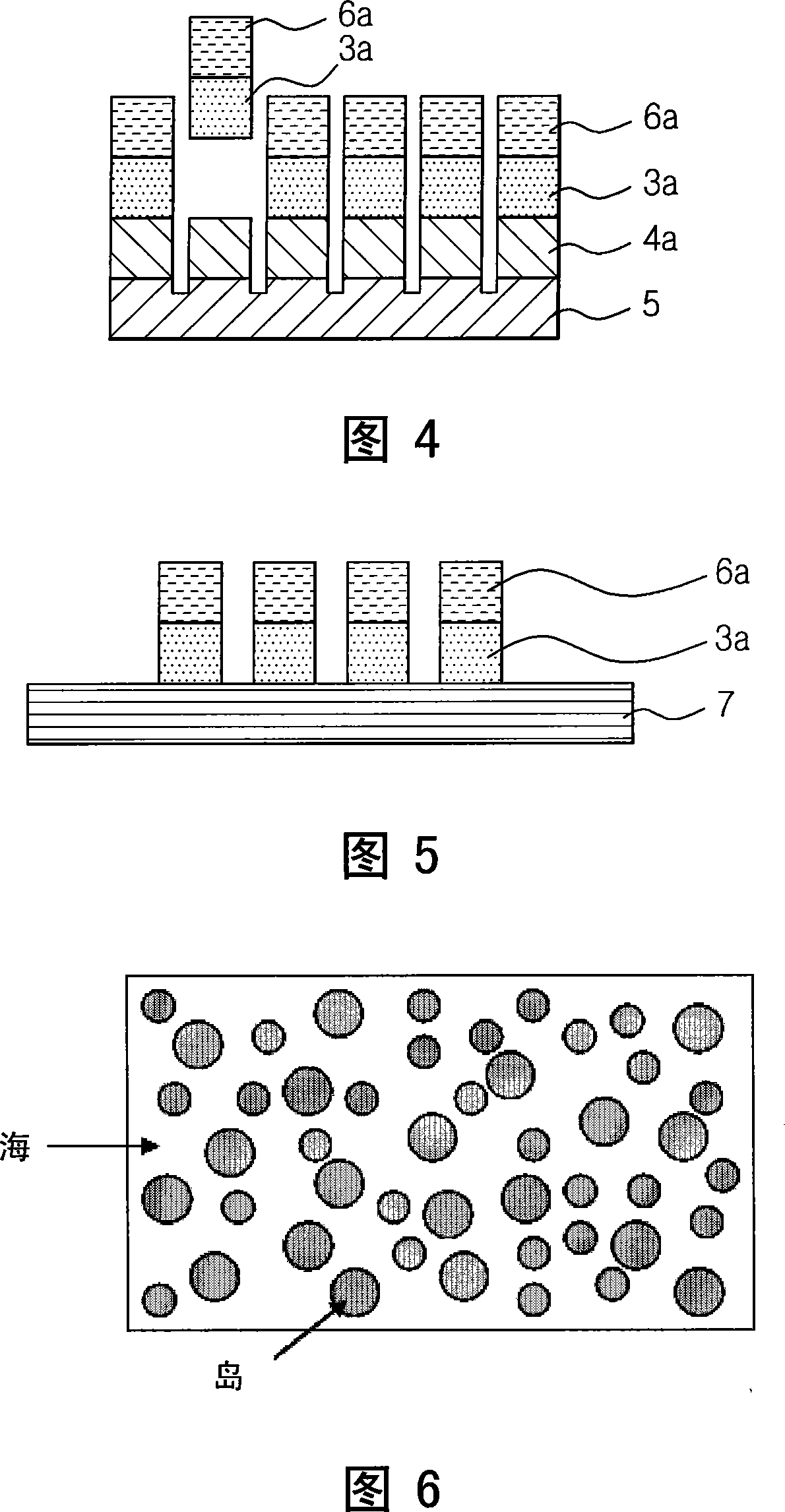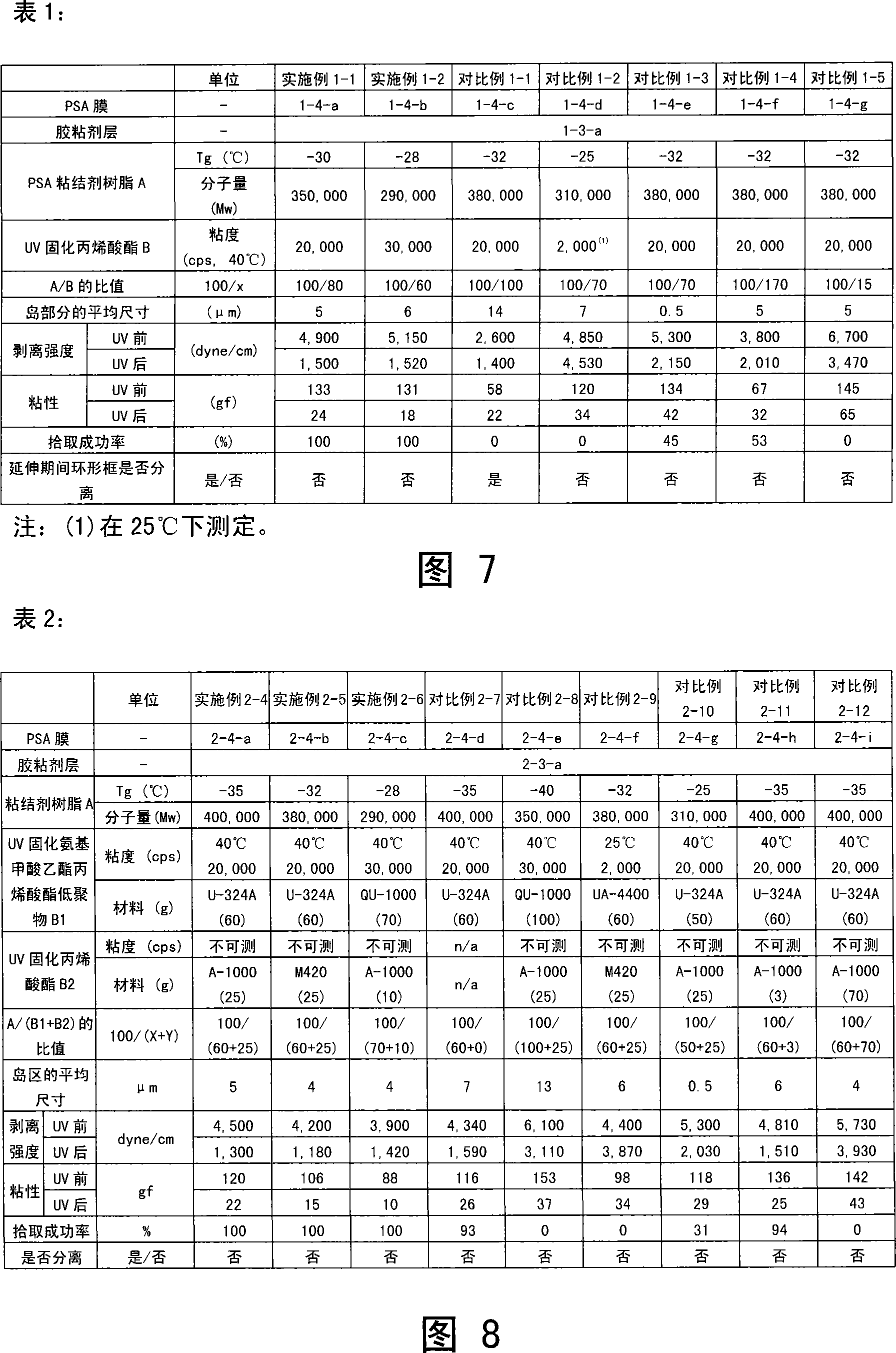Composition for pressure sensitive adhesive film, pressure sensitive adhesive film, and dicing die bonding film including the same
A technology of pressure-sensitive adhesives and compositions, applied in the direction of non-polymer organic compound adhesives, adhesives, film/sheet adhesives, etc., which can solve the problems of complicated picking steps
- Summary
- Abstract
- Description
- Claims
- Application Information
AI Technical Summary
Problems solved by technology
Method used
Image
Examples
preparation example Construction
[0063] Preparation of Adhesive Films
[0064] An adhesive film ("Adhesive Film 1-3-a") was prepared by mixing the following compounds:
[0065] 400 g of acrylic resin (KLS-1046DR, hydroxyl value 13 mg KOH / g, acid value 63 mg KOH / g, Tg 38° C., average molecular weight 690,000, manufactured by Fujikura Kasei Co. Ltd. (Japan));
[0066] 60 g of acrylic resin (WS-023, hydroxyl value or acid value 20 mg KOH / g, Tg is -5 ° C, average molecular weight is 500,000, hydroxyl or carboxyl content is 20, manufactured by NagaseChemteX Corp. (Japan));
[0067] 60 g of cresol novolak epoxy resin (YDCN-500-4P, molecular weight 10,000 or less, manufactured by Kukdo Chemical Co. Ltd. (Korea));
[0068] 40 g of cresol novolak curing agent (MEH-7800SS, manufactured by Meiwa Plastic Industries (Japan));
[0069]0.1 g imidazole curing catalyst (2P4MZ, manufactured by Shikoku Chemicals Corp. (Japan));
[0070] 3 g of alkyl isocyanate trimethylolpropane modified pre-curing additive (L-45, manufact...
Embodiment 1-1
[0078] 300 g of an acrylic resin (PSA binder) with a solid content of 33%, a Tg of -30°C, and a weight-average molecular weight of 350,000 (PSA binder) was mixed with 80 g of U-324A (Shin -Nakamura (Japan)) mixed. Next, 2 g of polyisocyanate curing agent (L-45, Nippon Polyurethane (Japan)) and 1 g of IC-651 (Ciba-Geigy, (Switzerland)) were added to prepare a photocurable composition. This photocurable composition was coated on one side of a 38 μm thick PET separation film (MRF-38, Mitsubishi Polyester (Japan)) using an applicator. After drying at 100° C. for 2 minutes, a 100 μm thick polyolefin film (OGF-100, Osaka Godo (Japan)) was laminated by heating to 60° C. to obtain PSA film 1-4-a. The prepared PSA film 1-4-a had island regions with an average size of 5 μm.
Embodiment 1-2
[0080] 300g of acrylic resin (PSA binder) with a solid content of 33%, a Tg of -28°C, and a weight-average molecular weight of 290,000 (PSA binder) was mixed with 60g of QU-1000 (amino Ethyl formate, Mw 1,800, manufactured by QNTOP (Korea)) was mixed. Next, 2 g of polyisocyanate curing agent (L-45) and 1 g of IC-651 were added to prepare a photocurable composition. This photocurable composition was coated on one side of a 38 μm thick PET separation film (MRF-38) using an applicator. After drying at 100° C. for 2 minutes, a 100 μm thick polyolefin film (0GF-100) was laminated by heating to 60° C. to obtain a PSA film 1-4-b. The prepared PSA film 1-4-b had island regions with an average size of 6 μm.
PUM
| Property | Measurement | Unit |
|---|---|---|
| glass transition temperature | aaaaa | aaaaa |
| melting point | aaaaa | aaaaa |
| melting point | aaaaa | aaaaa |
Abstract
Description
Claims
Application Information
 Login to View More
Login to View More - R&D
- Intellectual Property
- Life Sciences
- Materials
- Tech Scout
- Unparalleled Data Quality
- Higher Quality Content
- 60% Fewer Hallucinations
Browse by: Latest US Patents, China's latest patents, Technical Efficacy Thesaurus, Application Domain, Technology Topic, Popular Technical Reports.
© 2025 PatSnap. All rights reserved.Legal|Privacy policy|Modern Slavery Act Transparency Statement|Sitemap|About US| Contact US: help@patsnap.com



